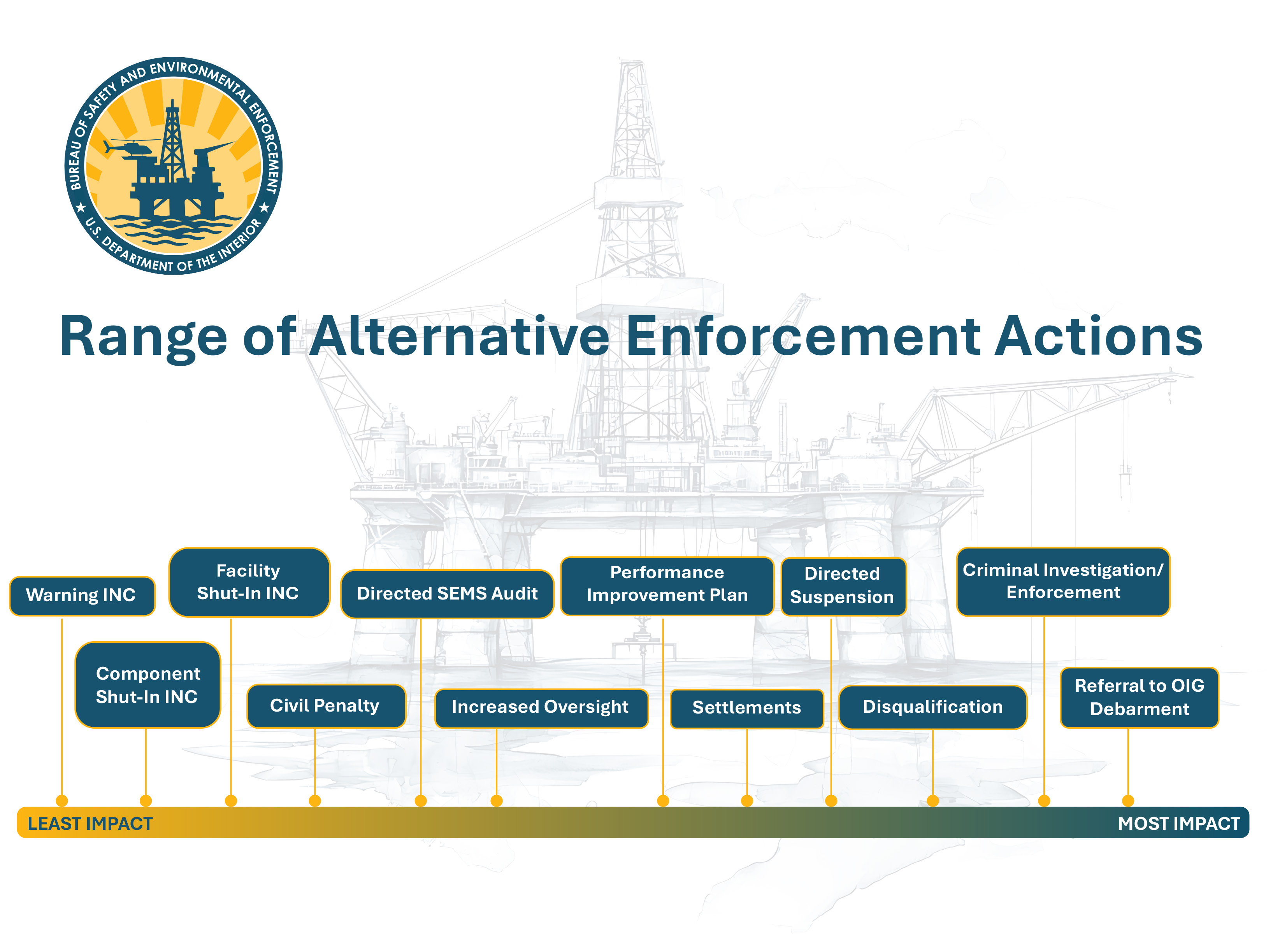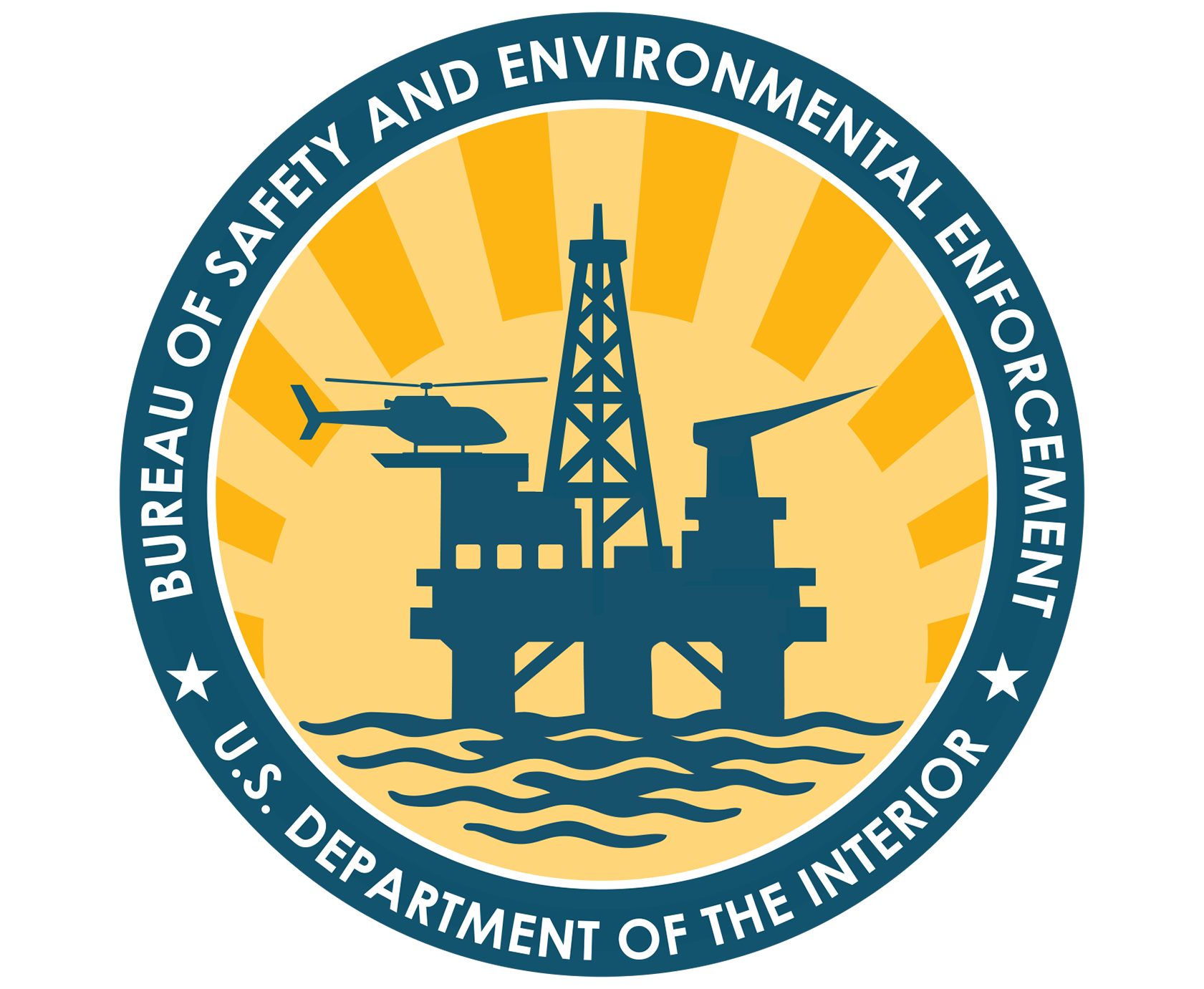BSEE oversees and enforces regulations to promote safety, protect the environment, and conserve resources offshore. Tools for enforcing these regulations include:
- Incident of Noncompliance (also known as a Notice of Noncompliance). BSEE formally notifies an operator of a violation and provides a deadline for correction. Learn more here.
- Civil Penalty. BSEE may assess a civil penalty, or monetary fine, if the violation (1) is not corrected in the timeframe provided or (2) involved harm or a threat of harm to safety or the environment as described in the Outer Continental Shelf Lands Act. Learn more here.
- Directed Audits of Safety and Environmental Management Systems (SEMS). In addition to recurring audits, BSEE may require an audit of an operator’s SEMS due to safety or noncompliance concerns or following an event.
- Increased Oversight List. Identifies facilities and operators that require special onsite inspections or attention based on their history of serious injuries or fatalities, pollution events, and inspection findings.
- Recommendation for Disqualification. If BSEE determines that an operator’s performance is unacceptable, it may recommend that the Bureau of Ocean Energy Management revoke its designation as operator on one or more facilities. Performance may be unacceptable due to incidents, pollution events and environmental damage, and other factors.
- Performance Improvement Plan. Before recommending disqualification, BSEE may give the operator an opportunity to improve its performance. The plan lists requirements and timelines.
- Settlement Agreement. A legally binding document that outlines the resolution to a dispute between BSEE and an operator.
- Directed Suspension. May be directed for all or any part of a lease area if an operator fails to comply with an applicable law, regulation, order, or provision of a lease or permit, or if the suspension is in the interest of national security or defense.
- Referral for Criminal Investigation. BSEE refers potentially criminal conduct related to federal energy activities to the DOI Office of Inspector General for review and possible investigation.
These tools are listed in order of severity in the graphic below.

